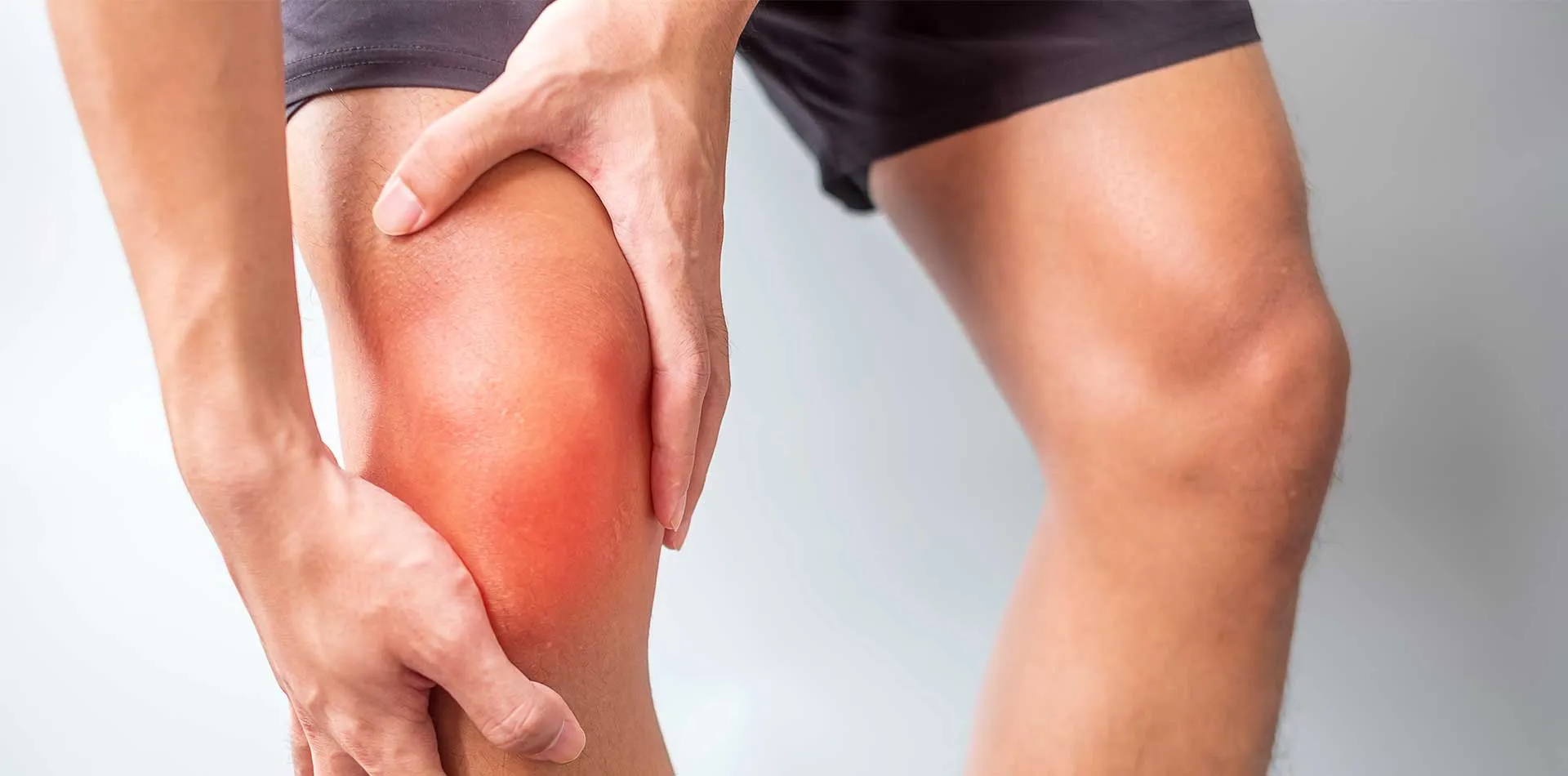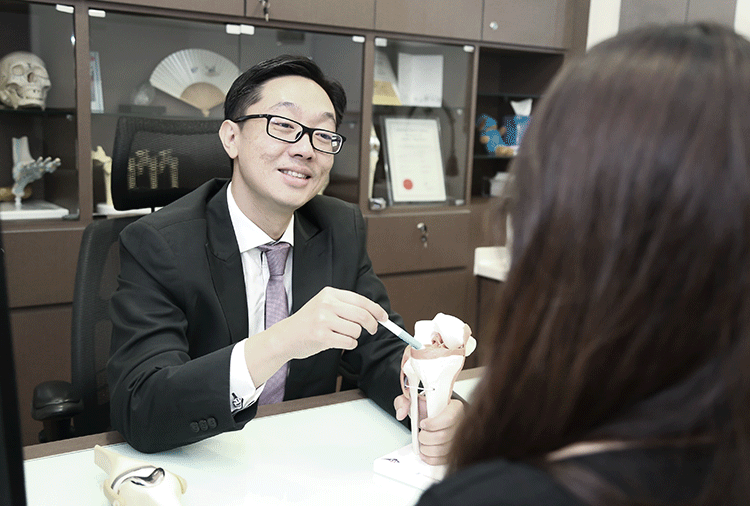Patellar tendonitis, also known as jumper’s knee, is a condition that affects the tendon connecting the kneecap (patella) to the shinbone (tibia). This condition is common among athletes, particularly those involved in sports that require frequent jumping, running, and sudden changes in direction.
What Is Patellar Tendonitis, And Why Is Treatment Important?
Patellar tendonitis is characterised by inflammation and irritation of the patellar tendon, leading to pain and tenderness just below the kneecap. This condition typically results from overuse and repetitive stress on the knee, causing small tears in the tendon that accumulate over time.
Treatment is important because it helps alleviate pain, reduce inflammation, and restore normal tendon function. Without proper treatment, patellar tendonitis can progress to chronic pain and weakness, severely limiting an individual’s ability to participate in physical activities and perform daily tasks. Early intervention through rest, physical therapy, and other modalities can promote healing and prevent long-term damage.
What Are The Causes And Risk Factors Of Patellar Tendonitis?
Causes
- Repetitive Stress – Activities that involve frequent jumping, running, or changes in direction can strain the patellar tendon.
- Overuse – Excessive use of the knee joint without adequate rest can lead to inflammation of the tendon.
- Improper Technique – Using incorrect techniques during physical activities can place additional stress on the patellar tendon.
- Muscle Imbalance – Weak or tight muscles around the knee and thigh can increase stress on the patellar tendon.
- Inadequate Conditioning – Lack of proper conditioning before engaging in physical activities can make the tendon more susceptible to injury.
- Sudden Increase in Activity – Abruptly increasing the intensity or duration of physical activity can strain the patellar tendon.
Risk Factors:
- Sports Participation – Athletes involved in sports that require frequent jumping, such as basketball, volleyball, and track and field, are at higher risk.
- Age – Young athletes and active individuals are more prone to developing patellar tendonitis.
- Tight Leg Muscles – Tight quadriceps and hamstring muscles can place additional strain on the patellar tendon.
- Obesity – Excess body weight increases the stress on the knee joint and patellar tendon.
- Inadequate Footwear – Wearing improper or worn-out shoes can affect knee mechanics and increase the risk of patellar tendonitis.
- Previous Knee Injuries – A history of knee injuries can make the patellar tendon more vulnerable to inflammation.
What Are The Common Symptoms Of Patellar Tendonitis?
Recognising the symptoms of patellar tendonitis is crucial for early diagnosis and effective treatment. The condition can significantly impact physical activity and overall quality of life, so being aware of its signs is important for timely medical intervention.
- Knee Pain – Pain is typically localised at the bottom of the kneecap, where the patellar tendon attaches. The pain may initially be mild and occur only during physical activity but can progress to being present during daily activities.
- Tenderness – The area around the patellar tendon is often tender to the touch.
- Swelling – Mild swelling may occur around the patellar tendon, making the area appear larger and more sensitive.
- Stiffness – Stiffness in the knee joint, especially after periods of inactivity or in the morning, is common.
- Weakness – The muscles around the knee may feel weak, affecting stability and performance.
- Difficulty with Movement – Activities such as jumping, running, or even walking up and down stairs may become difficult due to pain and stiffness.
- Worsening Symptoms with Activity – Symptoms typically worsen with physical activity and improve with rest, although advanced cases may experience pain even at rest.
How Is Patellar Tendonitis Diagnosed?
Diagnosing this condition accurately is crucial for effective treatment and recovery. The process involves a detailed clinical examination followed by diagnostic tests to confirm the diagnosis and assess the extent of the injury.
Clinical Examination
- Medical History – The doctor will gather information about the patient’s symptoms, including when they started, activities that worsen the pain, and any previous knee injuries or overuse.
- Visual Inspection – The knee will be examined for signs of swelling, redness, or warmth. The doctor will look for any visible changes in the patellar tendon area.
- Palpation – The patellar tendon will be gently pressed to assess tenderness and identify any localised swelling or thickening. Pain is typically felt just below the kneecap.
- Range of Motion – The doctor will test the knee’s range of motion to identify any restrictions or discomfort, particularly during activities that involve knee bending or extension.
- Functional Tests – The patient may be asked to perform specific movements, such as squatting or jumping, to evaluate pain levels and functional limitations related to the tendon.
Diagnostic Tests
- Ultrasound – Ultrasound imaging provides real-time images of the patellar tendon, allowing visualisation of inflammation, thickening, and possible tears or degeneration.
- MRI – Magnetic Resonance Imaging (MRI) offers detailed images of the tendon and surrounding tissues. It helps in assessing the extent of tendon damage, including tears and chronic changes.
- X-rays – X-rays are typically used to rule out other conditions, such as bone spurs or fractures. They do not directly show the patellar tendon but can help identify related structural issues.
- CT Scan – A Computed Tomography (CT) scan is less commonly used but can be helpful in complex cases where additional structural details are needed.
- Tendon Biopsy – In rare cases, a biopsy might be performed to examine the tendon tissue, especially if other diagnostic methods are inconclusive.
What Are The Patellar Tendonitis Treatment Options?
Patellar tendonitis, often referred to as “jumper’s knee,” is an inflammation of the patellar tendon, which connects the kneecap to the shinbone. It is common among athletes and individuals who engage in repetitive knee movements. Treatment aims to alleviate pain, promote healing, and restore knee function. Here are the primary treatment options:
Rest and Activity Modification:
- Rest – Avoid activities that exacerbate symptoms, such as jumping or running, to allow the tendon time to heal.
- Activity Modification – Substitute high-impact activities with low-impact exercises like swimming or cycling to maintain fitness without stressing the knee.
Ice Therapy:
- Application – Apply ice packs to the knee for 15-20 minutes several times a day to reduce inflammation and numb pain.
Medications:
- Nonsteroidal Anti-Inflammatory Drugs (NSAIDs) – Over-the-counter NSAIDs like ibuprofen or naproxen can help reduce pain and inflammation.
- Acetaminophen – Provides pain relief if NSAIDs are not suitable or if additional pain management is needed.
Physical Therapy:
- Strengthening Exercises – A physical therapist can develop exercises to strengthen the quadriceps, hamstrings, and calf muscles to support the knee and reduce stress on the patellar tendon.
- Stretching Exercises – Stretching the muscles around the knee can help alleviate tension on the patellar tendon.
- Eccentric Exercises – Specific eccentric exercises, where the muscle lengthens while contracting, can be effective in treating patellar tendonitis.
Bracing and Support:
- Knee Braces – A patellar tendon strap or brace can provide support and reduce stress on the tendon during activities.
- Orthotic Inserts – Custom orthotic inserts can help correct any gait issues and reduce knee stress.
Injections:
- Corticosteroid Injections – Injecting corticosteroids directly into the affected area can provide temporary relief from inflammation and pain.
- Platelet-Rich Plasma (PRP) Injections – PRP therapy involves injecting a concentration
Surgical Options:
- Arthroscopic Surgery – A minimally invasive procedure using small incisions and a camera to remove damaged tissue or repair the patellar tendon. This is typically considered if conservative treatments are ineffective.
- Tendon Repair Surgery – In severe cases where the tendon is significantly damaged, surgery may be needed to repair or reconstruct the tendon.
Alternative Therapies:
- Acupuncture – Some individuals find relief through acupuncture, which involves inserting thin needles into specific points on the body to alleviate pain and promote healing.
- Massage Therapy – Therapeutic massage can help reduce muscle tension around the knee and improve circulation.
Prevention Strategies For Patellar Tendonitis
Patellar tendonitis, or jumper’s knee, is an overuse injury that affects the patellar tendon connecting the kneecap (patella) to the shinbone (tibia). As mentioned, this condition commonly occurs in athletes involved in jumping sports but can affect anyone who performs repetitive knee-straining activities. Prevention strategies focus on alleviating symptoms, promoting healing, and preventing recurrence. Here are some strategies:
- Always perform a thorough warm-up before engaging in physical activity to prepare the muscles and tendons for movement. Likewise, cool down and stretch after activity to prevent stiffness and reduce the risk of injury.
- Incorporate quadriceps, hamstring, and calf-strengthening exercises into your regular fitness routine to build strong muscles that support the knee joint and patellar tendon. Eccentric exercises, such as decline squats, are particularly beneficial.
- Perform exercises such as leg presses, lunges, and step-ups to strengthen the lower body muscles.
- Regularly perform stretching exercises to maintain flexibility in the quadriceps, hamstrings, and calf muscles. Include stretches such as the quadriceps stretch, hamstring stretch, and calf stretch.
- Wear shoes that provide adequate support and cushioning for the feet and knees. Replace worn-out shoes regularly to maintain proper support and reduce the risk of tendon injuries.
- Avoid overtraining and allow adequate rest and recovery between workouts. Overuse and repetitive strain can increase the risk of patellar tendonitis. Listen to your body and take breaks when needed.
- Incorporate a variety of activities into your fitness routine to reduce repetitive strain on the patellar tendon. Engage in low-impact activities such as swimming, cycling, or yoga.
- Gradually increase the intensity and duration of physical activities to allow the patellar tendon to adapt to increased demands. Avoid sudden increases in activity levels.
- Maintain a healthy lifestyle by eating a balanced diet, staying hydrated, getting enough sleep, and managing stress. These factors contribute to overall musculoskeletal health and reduce the risk of tendon injuries.
- Schedule regular check-ups with a healthcare professional to monitor tendon health and address any underlying issues that may contribute to patellar tendonitis. Early detection and intervention can help prevent progression and improve treatment outcomes.






